April 26, 2025. The long-awaited day arrived.
The Carrigaun Room at the Grainstore, usually empty and resonant with silence, was transformed into a place of presence. After a year and a half of walking, waiting, and inner searching, the images of Éire i Dubh Agus Bán finally emerged from the digital realm to meet light, air, and gaze.
In the hours before the vernissage, the space was quiet. I observed it slowly, allowing my eye to adjust, as if I were preparing to photograph it rather than exhibit in it. Each print—mounted on fine art foam board, with a thin white border and discreet title—hung delicately from near-invisible cables. Suspended in mid-air, the works seemed to float: a visual breath held between earth and sky.
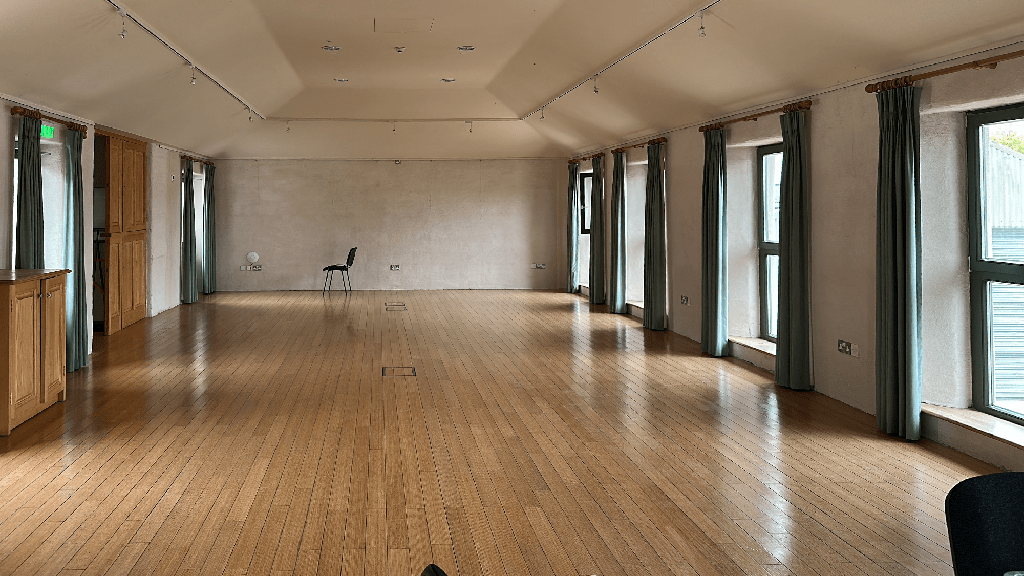
The lighting was subtle. Neutral spotlights created alternating zones of stillness and accent, allowing some images to recede gently while others revealed themselves with clarity. I did not attempt to dominate the space, but to listen to it—and let the photographs find their place within it.
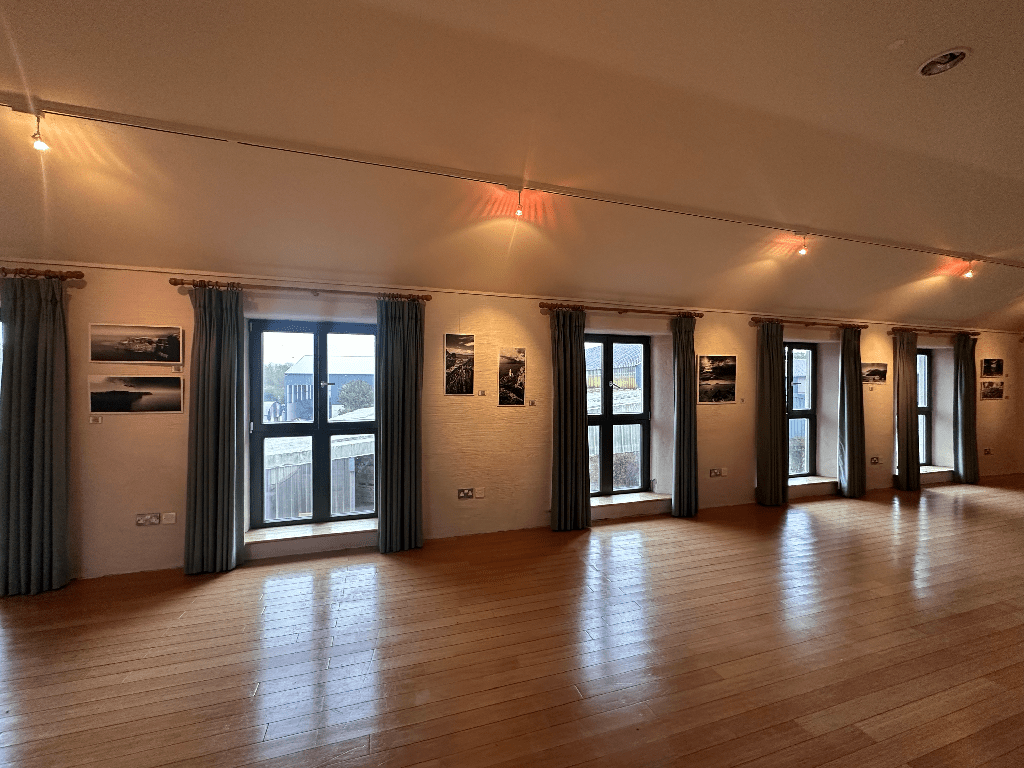
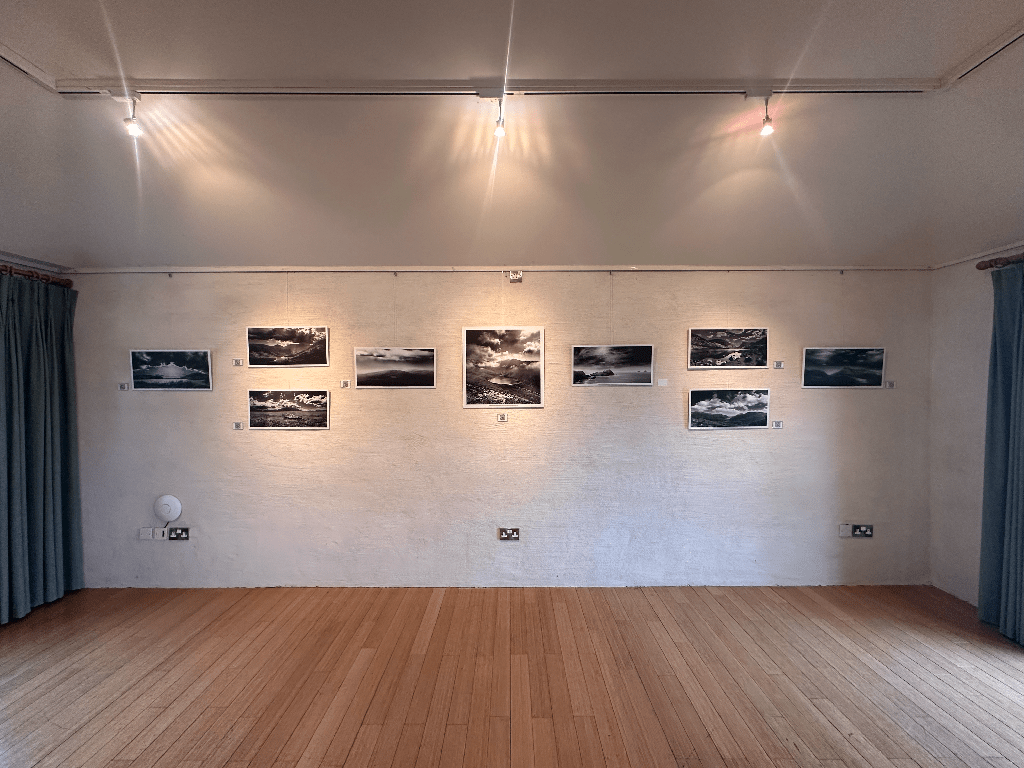
The layout of the works was not linear. It followed neither a strict chronology nor a predefined theme, but something closer to rhythm—a visual tempo. Some pieces resonated by similarity, others by contrast. The entire exhibition was conceived as a walk: not a path to follow, but a field to wander.
At 6:00 PM, the first guests began to arrive.
The vertical banner bearing Surf and Rocks stood at the entrance—a quiet invitation. A large QR code encouraged guests to explore more deeply: each photograph was linked to its own page on my website, where words and images continued the dialogue.
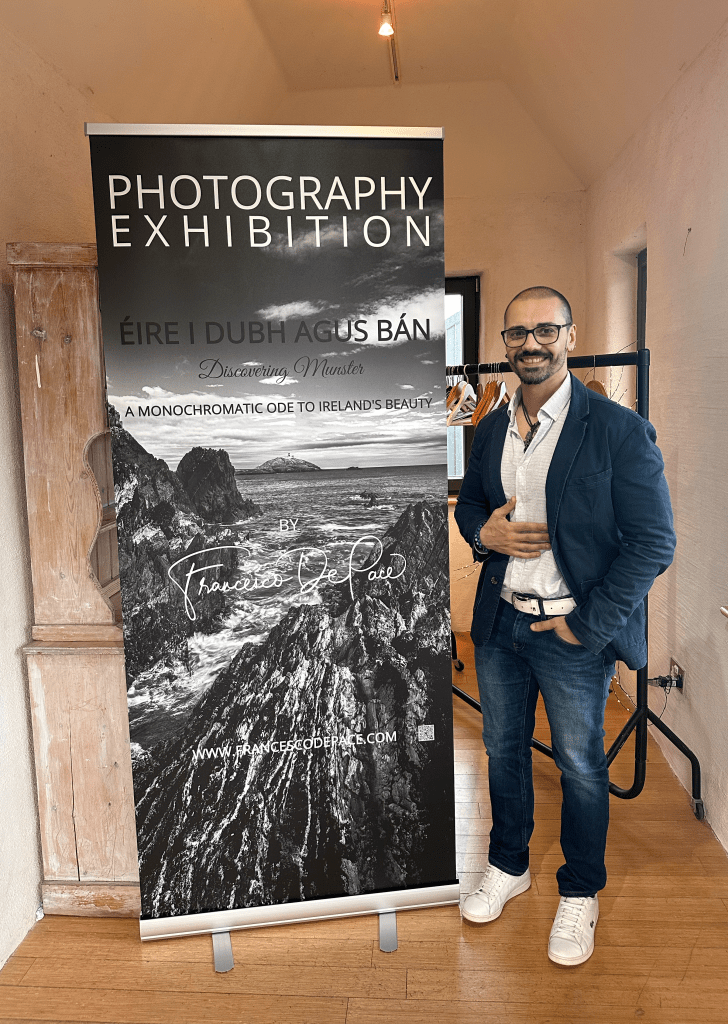
Some walked through the room in silence. Others paused to read, ask questions, or simply look longer.
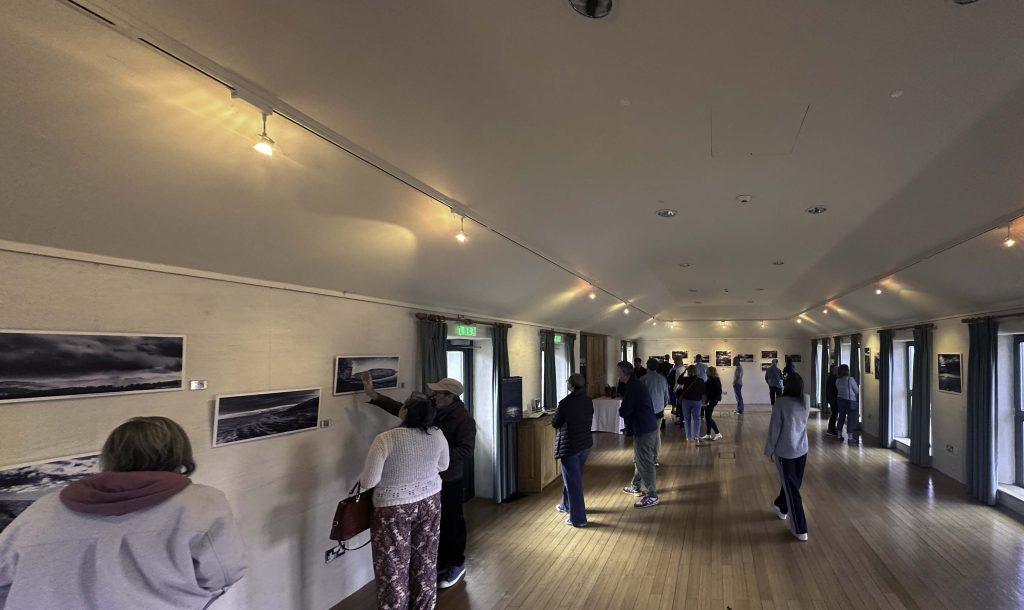
The discreet sound of footsteps mingled with soft voices and the occasional clink of glasses. Prosecco, local cider, and tea were offered—simple refreshments that mirrored the tone of the evening: warm, informal, open. Two members of staff greeted guests at the door, while I moved quietly through the space, responding to questions, collecting impressions.
Photographer Daniel Callen documented the event with care. His images and short video clips captured not just the visual dimension of the evening, but also its atmosphere: the gestures, the proximity, the private moments of reflection.
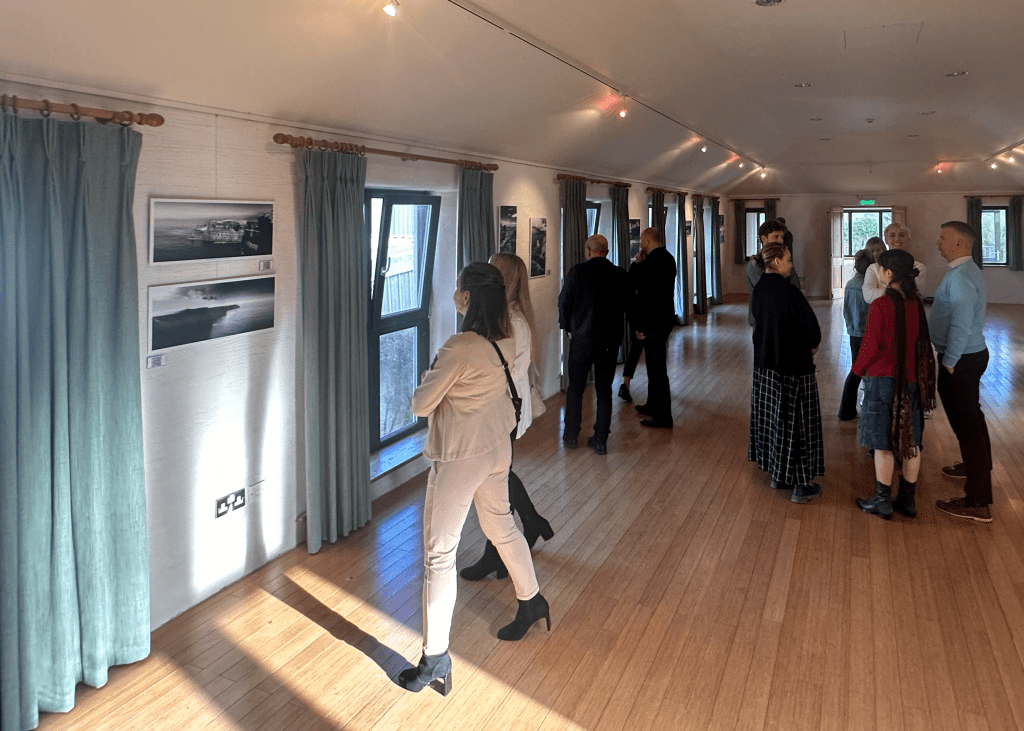
Many spoke of silence. Of slowness.
Of stillness in movement.
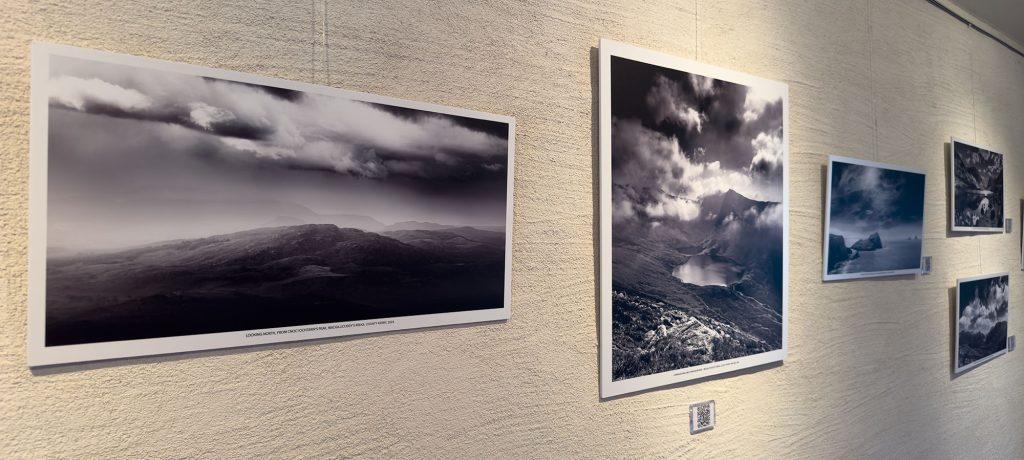
Some recognised familiar Irish places rendered unfamiliar by the absence of colour. Others asked where a photo had been taken, only to realise that the place mattered less than the feeling it evoked.
People lingered longer than I expected. And that, more than anything, felt like success.
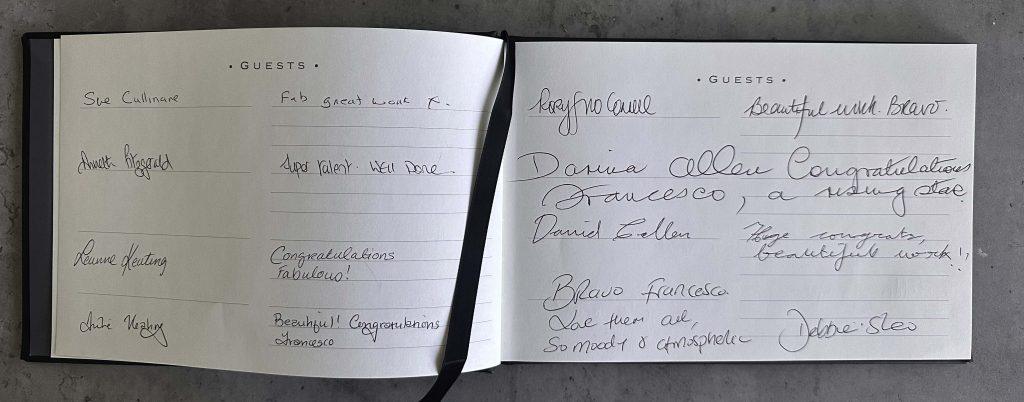
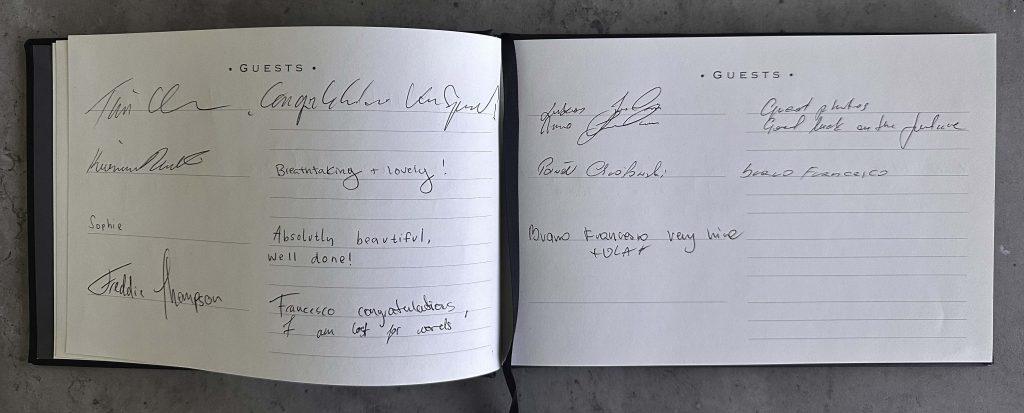
This exhibition was never intended as a statement, but as an offering.
A quiet space in which images could breathe, and where the viewer could choose how deeply to enter. There was no prescribed route, no explanation required. Just the presence of the image—and of the person standing before it.
I watched strangers stand before photographs I had made in solitude, on cold mornings or in long hours of waiting.
Now, those same images spoke in ways I could not have foreseen. They no longer belonged to me. They had become shared.
“Photography is the simultaneous recognition, in a fraction of a second, of the significance of an event.”
— Henri Cartier-Bresson
Before the first guest arrived, the Carrigaun Room stood in silence — each image in its place, each light adjusted.
Click below to see the exhibition space ready to receive its first viewers.
Beyond the Launch.
When a Photograph Becomes a Space.
A reflection on the Relationship between the Work and the Exhibition
The moment an image leaves the solitude of the camera and enters a public space, it changes nature. It no longer belongs only to the author — it becomes a threshold between two worlds: the one seen by the photographer, and the one felt by the observer. The exhibition of Éire i Dubh Agus Bán was born from this awareness: that a photograph, to truly exist, must be seen, yes — but more importantly, must be encountered.
This project was never about showing places. It was about revealing presences. Each photograph is the result of a personal act of listening — to the light, the wind, the land, the silence. The exhibition space was conceived not as a gallery to display, but as a place of suspension, where the viewer could slow down and meet these images not as decorations, but as mirrors. Mirrors of memory, of sensation, of questions that don’t demand answers.
The black and white format, the panoramic perspective, the suspended installation, the subtle lighting — everything was designed to strip away the noise and allow what is essential to emerge. To make room for shadow and nuance. The QR codes beside each print invited the visitor into an extended dialogue, a path that doesn’t end on the wall but continues online, in the blog, in thought.
What I exhibited was not just my photography. I exhibited a way of looking.
A way of walking through the world slowly, vulnerably. I invited the viewer not to consume the image, but to inhabit it — to let the land speak not through colour, but through contrast and stillness.
Ultimately, Éire i Dubh Agus Bán is not a collection of photographs. It is an attempt to create a space — physical and emotional — where nature and memory, technique and intuition, can meet in silence. And it is in this silence, I believe, that we begin to truly see.
